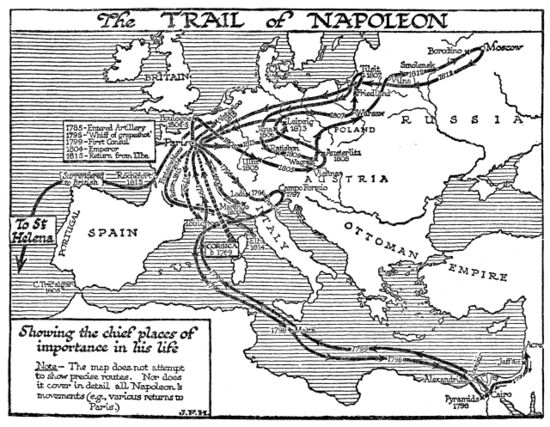imported>Chunbum Park |
imported>John Stephenson |
| (236 intermediate revisions by 8 users not shown) |
| Line 1: |
Line 1: |
| {{Image|Muncprotein.jpg|right|300px|Inman M ( ) Shape of a common protein module suggests role as molecular switch.}} | | {{:{{FeaturedArticleTitle}}}} |
| '''[[Macromolecular chemistry]]''' is the study of the physical, biological and chemical structure, properties, composition, and reaction mechanisms of [[macromolecules]]. A macromolecule is a molecule that consists of one or more types of repeated 'building blocks'. The building blocks are called [[Monomer|monomeric unit]]s (monomers).
| | <small> |
| | | ==Footnotes== |
| Macromolecules (also known as polymer molecules) appear in daily life in the form of [[plastic]], [[styrofoam]], [[nylon]], etc. These [[polymer]]s, i.e., substances consisting of polymer molecules, are of great technological importance and are used in the manufacturing of all sorts of goods, from automobile parts to household appliances. The artificial polymer molecules usually exist of long repetitions of identical monomers, either in chains or networks.
| | {{reflist|2}} |
| | | </small> |
| In molecular biology macromolecules (biopolymers) play a very important role: the well-known molecules [[DNA]], [[RNA]], and [[polypeptides]] ([[proteins]]) are examples of macromolecules. In molecular biology one is mostly interested in macromolecules in solution, usually dissolved in water. The biological function of macromolecules in living cells is a highly relevant and widely studied topic of research. Although, strictly speaking, biopolymers belong to the class of polymer molecules, there is a tendency not to use the latter name in biological applications, but to speak of macromolecules. The term "polymer" is usually reserved for the substances manufactured in bulk by the chemical industry.
| |
| | |
| In industry, the value of synthetic macromolecules as plastics and nylon, has risen enormously over the last 60 years. They have made it possible to mould shapes that would have been impossible to create without them. When they were first developed, their resistance to rupture and degradation was seen as a profound advantage, but nowadays we seek more biologically degradable plastics such as polyethyleneglycol that pollute the environment less.
| |
| | |
| Biological macromolecules include, besides the molecules already mentioned, [[enzyme]]s, and [[polysaccharide]]s, such as cellulose and starch. The better understanding of the basic behavior of polymer molecules has enhanced our knowledge of these biological molecules, and studies of partially charged [[polyelectrolytes]] have led to a deeper insight into their biological function. The investigations of the three-dimensional structure of macromolecules, (their [[configuration]] and [[conformation]]), have led to the identification of specific regions that perform specialized activities. A good example is the catalytic role of particular amino acid residues in polypeptide enzymes and the role of [[functional group]]s such as [[biotin]] or [[riboflavin]] in cellular metabolism. The folding of macromolecules is now a topic of much scientific investigation, since the correct folding of these polymers is a critical factor for normal function. Abnormal folding of particular proteins is the cause of several diseases, including [[Alzheimer disease|Alzheimer's]] and [[Creutzfeldt-Jakob disease]] (CJD) .
| |
Latest revision as of 10:19, 11 September 2020
Napoleon (Napoleon Bonaparte or, after 1804, Napoleon I, Emperor of the French) was a world historic figure and dictator of France from 1799 to 1814. He was the greatest general of his age--perhaps any age, with a sure command of battlefield tactics and campaign strategies, As a civil leader he played a major role in the French Revolution, then ended it when he became dictator in 1799 and Emperor of France in 1804 He modernized the French military, fiscal, political legal and religious systems. He fought an unending series of wars against Britain with a complex, ever-changing coalition of European nations on both sides. Refusing to compromise after his immense defeat in Russia in 1812, he was overwhelmed by a coalition of enemies and abdicated in 1814. In 1815 he returned from exile, took control of France, built a new army, and in 100 days almost succeeded--but was defeated at Waterloo and exiled to a remote island. His image and memory are central to French national identity, but he is despised by the British and Russians and is a controversial figure in Germany and elsewhere in Europe.
Rise to Power
Once the Revolution had begun, so many of the aristocratic officers turned against the Revolutionary government, or were exiled or executed, that a vacuum of senior leadership resulted. Promotions came very quickly now, and loyalty to the Revolution was as important as technical skill; Napoleon had both. His demerits were overlooked as he was twice reinstated, promoted, and allowed to collect his back pay. Paris knew him as an intellectual soldier deeply involved in politics. His first test of military genius came at Toulon in 1793, where the British had seized this key port. Napoleon, an acting Lieutenant-Colonel, used his artillery to force the British to abandon the city. He was immediately promoted by the Jacobin radicals under Robespierre to brigadier-general, joining the ranks of several brilliant young generals. He played a major role in defending Paris itself from counter-revolutionaries, and became the operational planner for the Army of Italy and planned two successful attacks in April 1794. He married Josephine (Rose de Beauharnais) in 1796, after falling violently in love with the older aristocratic widow.[1]
- ↑ Englund pp 63-73, 91-2, 97-8
